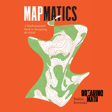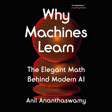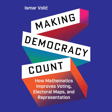
What is Data Visualization? From the Expert Behind PolicyViz
In this episode Autumn and Dr. Jonathan Schwabish discuss the importance of strategic thinking in data visualization and the key elements of good data. He emphasizes the need to understand the data and how it was collected, as well as the importance of starting bar charts at zero. He also highlights common mistakes in data visualization, such as distorting or lying with visuals, and the potential impact of data visualization on policy decisions. Looking to the future, he discusses the role of AI in data visualization, the integration of AI into visualization tools, and the potential of augmented reality and virtual reality in data visualization. Jon Schwabish discusses the different data visualization tools he uses, including Excel, R, Tableau, Datawrapper, and Flourish. He emphasizes the importance of choosing the right tool for the specific use case and audience. He also highlights the need for policymakers and individuals to be trained in interpreting and using data visualizations effectively. Schwabish discusses the ethical considerations in data visualization, such as using inclusive language and considering accessibility.
Keywords: data visualization, strategic thinking, good data, common mistakes, impact on policy decisions, AI, augmented reality, virtual reality, data visualization tools, Excel, R, Tableau, Datawrapper, Flourish, policymakers, data interpretation, ethical considerations, inclusive language, accessibility
Subscribe to Breaking Math wherever you get your podcasts.
Become a patron of Breaking Math for as little as a buck a month
Follow Jon Schwabish on Twitter and on YouTube. Also go give PolicyViz Podcast a follow
Follow Breaking Math on Twitter, Instagram, LinkedIn, Website, YouTube, TikTok
Follow Autumn on Twitter and Instagram
Follow Gabe on Twitter.
Become a guest here
email: [email protected]



















